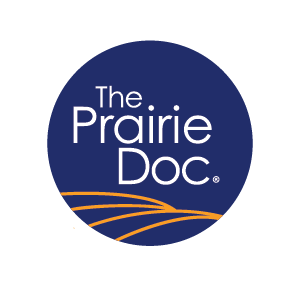Why Pelvic Health Matters: More Than Just Kegels

In our research and clinical practice experiences, a common theme emerges from people living with pelvic floor issues -- “I wish someone had told me about this sooner.” Through interviews and conversations, we’ve documented the stories of individuals who didn’t know what questions to ask, didn’t realize their symptoms were treatable, and often assumed they were alone. In her practice, Staci sees these realities unfold in the clinic every day, as both male and female patients arrive with frustration, confusion and a long history of being told that their concerns are normal, inevitable or simply something to live with.
Pelvic floor disorders such as urinary incontinence, constipation, pelvic pressure, pain with intercourse and pelvic floor dyssynergia (poor coordination) are more common than most people realize. These symptoms affect millions of adults. Nearly one in four women and one in eight men in the U.S. will experience some form of pelvic floor dysfunction in their lifetime. Yet these issues are often dismissed, hidden or normalized. Although not uncommon, we want to emphasize that dysfunction in the system is not normal. It is treatable. Conversations around pelvic health often begin only after childbirth, surgery or the slow accumulation of symptoms that have significantly affected quality of life. By that point, the affected person is often dealing not only with physical discomfort, but with years of self-doubt or embarrassment.
The pelvic floor is a group of muscles that sits at the base of the pelvis. These muscles are responsible for more than most people are ever taught. In both men and women, the pelvic floor supports the bladder, bowel, abdominal and reproductive organs. It helps control continence, allows for sexual function, and plays a role in basic breathing, posture and core stability. Despite all of this, most people grow up never learning about their pelvic floor, how it functions, or how to care for it. This lack of awareness isn’t just a missed opportunity for treatment; it’s a missed opportunity for prevention.
Every human has a pelvic floor. Pelvic health should be part of basic health education, not a niche topic reserved for specialists. Young people deserve to understand how their bodies work, and that includes the pelvic floor. Learning about healthy habits, such as avoiding excessive straining, practicing coordinated breathing during physical exertion, and developing strength, coordination and flexibility throughout the hips and core, can make a meaningful difference later in life. And for those planning for pregnancy, knowledge of pelvic floor function before and during pregnancy can support smoother recovery and reduce complications down the line. Gaining understanding of how the pelvic systems change with age, after surgery, or with the hormone changes of peri- and post-menopause also offers people a chance to create change and retain optimal function.
Kegels are often the only pelvic health advice people hear, but the solution is rarely that simple. Some individuals need strengthening; others need help learning to relax and coordinate pelvic floor muscles properly. Pelvic health is not a “one-size-fits-all” issue, and that’s why education before symptoms emerge is so important.
When problems do arise, they’re worth bringing up. Leakage, pressure and pain are common, but they’re not normal or untreatable at any age. Pelvic health physical therapists and other providers trained in this area can offer effective, individualized care. But even better is helping people know enough to ask questions earlier, build healthy habits sooner and prevent dysfunction before it starts.
Pelvic health matters. And the earlier we begin talking about it, the better.
Patti Berg-Poppe is a professor and chair of the Department of Physical Therapy at the University of South Dakota. Her research focuses on pelvic health, including postpartum recovery and pediatric pelvic floor dysfunction, as well as motor control and learning in special populations. She has led interdisciplinary studies on the effects of intrapartum pelvic trauma on sexual function, return to participation and family well-being and has published on exercise interventions for conditions like diastasis recti and dysfunctional voiding in children.
Staci Wietfeld is a board-certified orthopedic clinical specialist and certified pelvic rehabilitation practitioner. She specializes in treating complex musculoskeletal conditions and pelvic floor dysfunction, integrating advanced manual therapy and patient education to promote recovery and well-being. In addition to her clinical practice with Avera Health Systems in Sioux Falls, South Dakota, she contributes to research and public education on pelvic health and physical therapy.
Follow The Prairie Doc® at www.prairiedoc.org, Facebook, Instagram, YouTube, and Threads. Prairie Doc Programming includes On Call with the Prairie Doc®, a medical Q&A show (most Thursdays at 7pm streaming on Facebook), 2 podcasts, and a Radio program (on SDPB), providing health information based on science, built on trust







